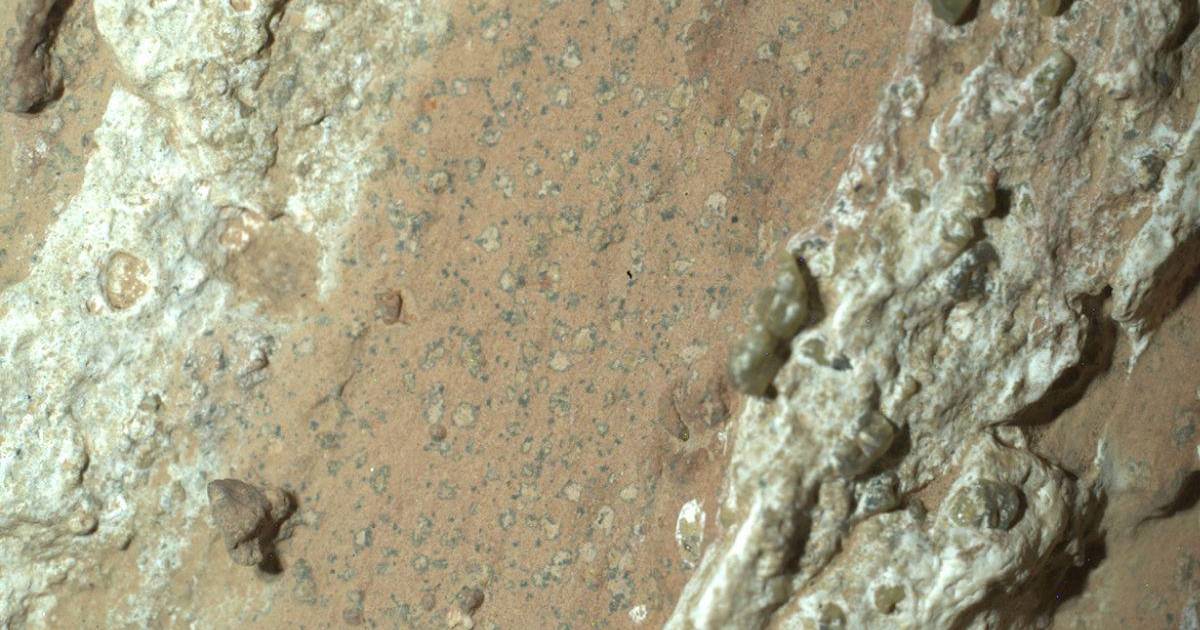NASA's Perseverance rover has discovered an “interesting” rock on the surface of Mars that the US space agency estimates may have hosted microbial life billions of years ago.
The rock was collected on July 21 by a six-wheeled robot in the northern part of Neretva Wallis, which is believed to be an ancient river valley about 400 meters wide millions of years ago.
The space agency explained that the first studies carried out with the rover's instruments revealed that “the rock has qualities that fit the definition of a potential indicator of ancient life.”
“The rock reveals chemical signatures and structures created by life billions of years ago when there was flowing water in the area studied by the rover,” said NASA's Jet Propulsion Laboratory (JPL).
The space agency was quick to point out that further investigation is necessary to determine whether these are indeed signs of microscopic life in the arrow-shaped, veined rock, which measures approximately 1 x 0.6 meters.
As NASA points out, the traces in the rock and traces of possible microscopic life may have been created by “non-biological processes”.
However, the rock nicknamed 'Cheyawa Falls' is, as Ken Farley of the rover's science team said, “a very enigmatic, complex and very important rock.
Throughout the rock are large white veins of calcium sulfate, red in them indicating the presence of hematite, one of the minerals that gives Mars its distinctive rusty tone.
The rover closely observed these red areas and found “dozens of white spots of millimeter size and irregular shape, each surrounded by black material similar to leopard spots,” the space agency explained.
Subsequent studies with Persistence instruments yielded traces of iron and phosphate in these “black halos,” much to the surprise of scientists.
“On Earth, these types of features in rocks are often associated with the fossil record of microbes living underground,” said David Flannery, an astronomer and member of the Perseverance Science team.
Barley pointed out that there are still many questions about the rock's characteristics, which they probed back and forth with the rover's instruments, which have already exhausted its potential.
For a more thorough study, it will be necessary to bring it to Earth, which will allow us to fully understand what happened in the Jezero Crater, where Perseverance is located and where water is estimated to have existed millions of years ago.
NASA is in the middle of a mission to send back samples collected by the Perseverance. The most recent project he designed involved up to $11 billion, a budget challenge.




:quality(85)/cloudfront-us-east-1.images.arcpublishing.com/infobae/OPC4IUS7FFA5VM4DYXJAXBEOVY)
:format(jpeg)/cloudfront-us-east-1.images.arcpublishing.com/gfrmedia/AAMJREWTTFG43B5PIICP4SHGC4.jpeg)